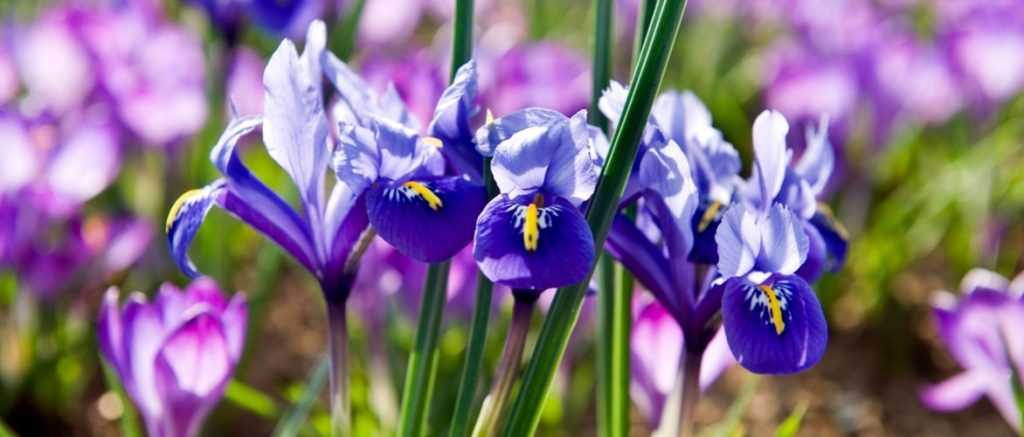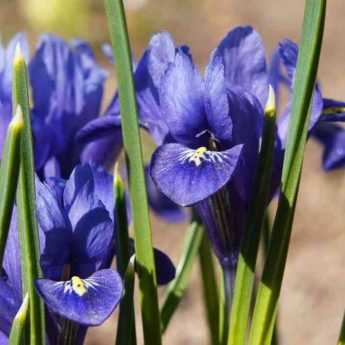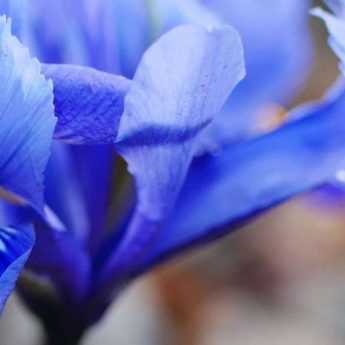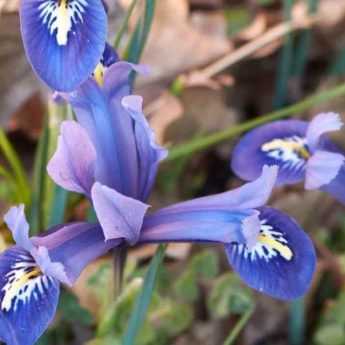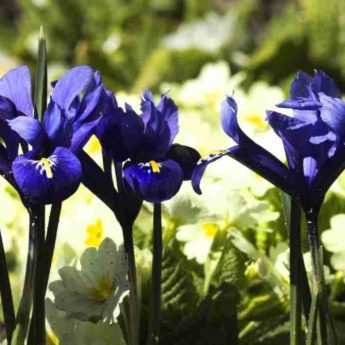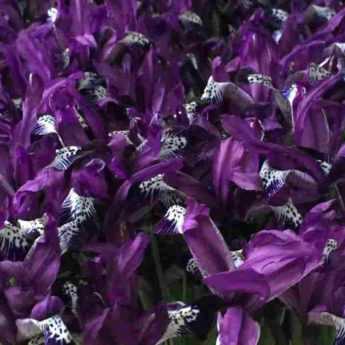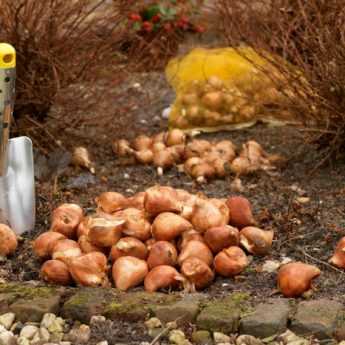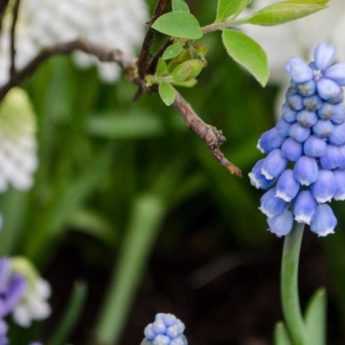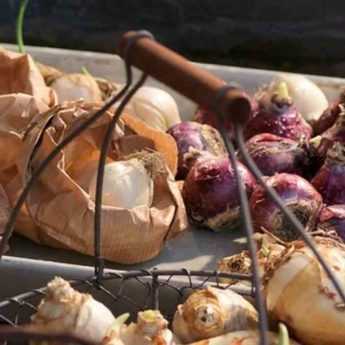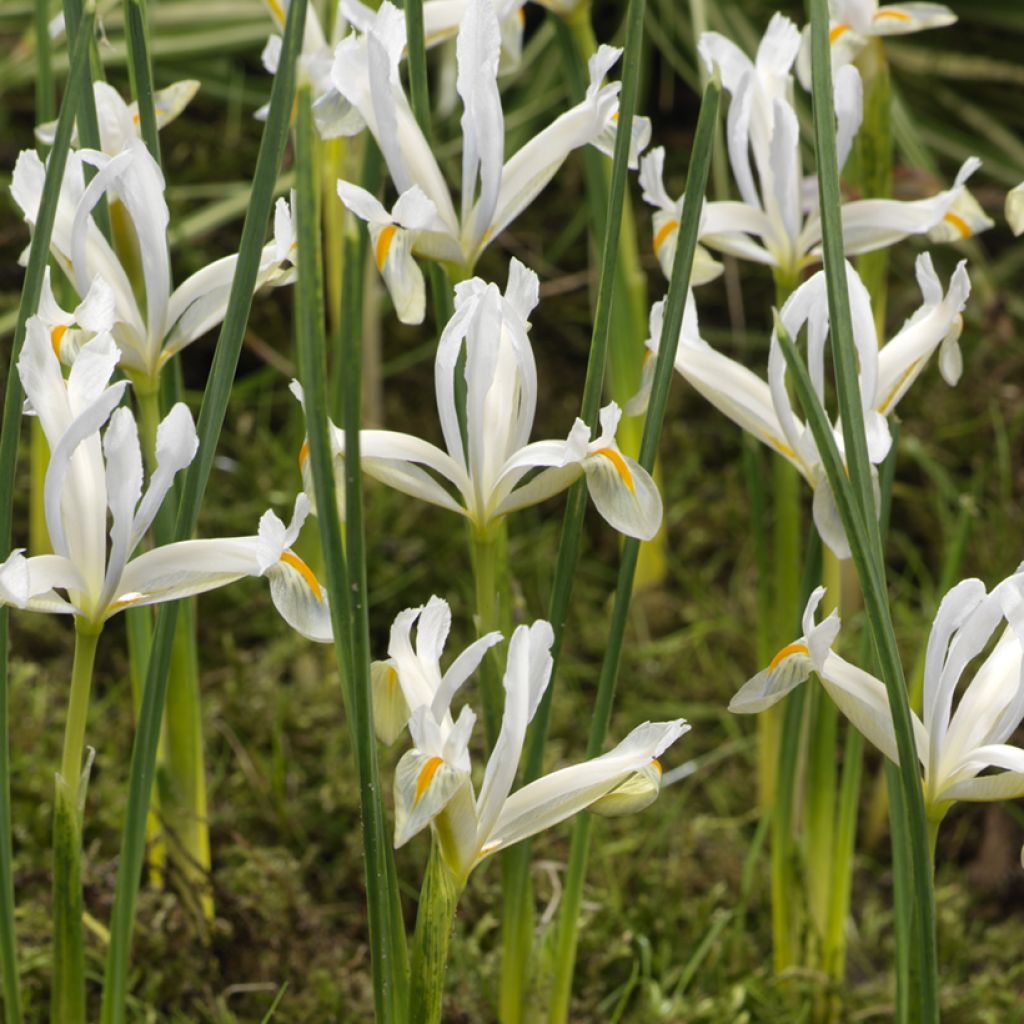

Iris reticulata Natascha
Iris reticulata Natascha
Iris reticulata Natascha
Iris transcaucasien, iris réticulé, iris nain
Très déçue car ces iris ne sont pas blanc et jaune vif comme sur la photo et dit dans la description mais plutôt blanc, bleu ciel (dominante très bleue) et jaune clair. Ce n'est pas du tout l'effet recherché. Je n'aime pas ces couleurs fades.
Beline, 17/03/2022
Garantie de reprise de 6 mois sur cette plante
Plus d'infos
Nous garantissons la qualité de nos plantes durant un cycle végétatif complet.
Nous remplaçons à nos frais toute plante n'ayant pas repris dans des conditions climatiques et de plantation normales.
A partir de 7,90 € pour une livraison en relais et 6,90 € pour une livraison à domicile
Livraison express à domicile en 24-48h: 8,90 €.
Cette plante est-elle adaptée à mon jardin ?
Je crée mon profil Plantfit →
Description
L'Iris reticulata Natascha, également appelé iris réticulé est une petite bulbeuse solide, parfaitement rustique et sans souci. Sa floraison est très précoce : ses fleurs aux lignes délicates, blanches pointées de jaune, s'épanouissent dès la fin de l'hiver, en même temps que les perce-neige. Elles sont légèrement et agréablement parfumées. Cette plante s'adapte aussi bien dans les massifs que dans les jardinières. Il apprécie le soleil et les sols bien drainés, frais en hiver et secs en été.
L'Iris reticulata est une plante vivace de la famille des iridacées, originaire des montagnes du Caucase, de Turquie, d’Iran, et d’Irak. Cet iris est très rustique (jusqu'à -34°C) et facile à cultiver. 'Natascha, dont il est issu, se développe à partir d'un organe de réserve, qui est un bulbe allongé de 2 à 3 cm de hauteur, couvert d'un épiderme blanc. Il fleurit dès la fin février, ou en mars selon le climat, avant l'apparition du feuillage, ce qui le rend précieux au jardin. Les fleurs, larges de 5 à 10 cm sont portées par des tiges de 12 cm de hauteur environ. Elles sont grandes par rapport à la taille de la plante semblent émerger directement de la terre. Elles sont formées de 3 tépales internes dressés, blancs, dominant 3 tépales externes plus horizontaux, marqués d'une tâche jaune d'or et de stries mauves. Elles sont légèrement parfumées. Le feuillage se développe lorsque les fleurs fanent, formant une touffe de feuilles étroites, raides et pointues, de 20 cm de hauteur au maximum. C'est à ce moment là que le bulbe se divise en plusieurs bulbilles, permettant à la plante de coloniser son environnement.
L'Iris reticulata Natascha se cultive aussi bien en potées que dans les massifs ensoleillés ou en rocaille. Ses seules exigences sont un sol drainé et une exposition ensoleillée. On peut l'associer à d'autres petits bulbes à floraison précoce, comme les perce-neige, les crocus, ou les tulipes botaniques et hâtives. Il se marie bien également avec les hellébores. On les plantera par groupe de 15 bulbes, afin de constituer rapidement de belles tâches de couleur à la sortie de l'hiver. Il s'adapte parfaitement aux climats montagnards et méditerrannéens.
Port
Floraison
Feuillage
Botanique
Iris
reticulata
Natascha
Iridaceae
Iris transcaucasien, iris réticulé, iris nain
Horticole
Plantations et soins
Plantez les bulbes en septembre- octobre, à une exposition ensoleillée, en sol bien drainé à 10 cm de profondeur et de préférence par groupe, espacés de 8 cm. Coupez les fleurs fanées à leur base en prenant soin de laisser la tige. Continuez à arroser les plantes à leur pied. Une fois le feuillage jauni, supprimez-le et laissez les bulbes en place pour qu'ils refleurissent l'année suivante. Aprés floraison, arrosez 3 fois à l'engrais liquide à un mois d'intervalle. Laissez les bulbes en place plusieurs années.
Quand planter ?
Pour quel endroit ?
Soins
Nos conseils plantation et soins
Planter vos bulbes en pot
notre spécialiste
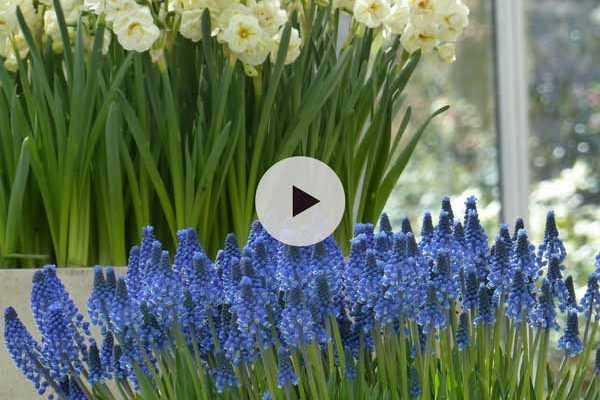
Vous n'avez pas trouvé votre bonheur ?
La rusticité est la température hivernale la plus basse qu'une plante puisse endurer sans subir de dommages sérieux, voire mourir. Cette rusticité est toutefois affectée par l'emplacement (zone abritée, comme un patio), les protections (voile d'hivernage) et le type de terre (la rusticité est améliorée par un sol bien drainé).

Conditions Générales d'Utilisation du Service Photos Client
Dans le but de favoriser l’interaction et le partage d'expériences entre jardiniers, Promesse de fleurs propose différents services permettant le dépôt de contenus sur son Site – via notamment le module « Partage de photos».
L’Utilisateur s’interdit de:
- Publier tout contenu illégal, préjudiciable, injurieux, raciste, incitant à la haine, révisionniste, contraire aux bonnes mœurs, portant atteinte à la vie privée ou portant atteinte aux droits privatifs de tiers, notamment le droit à l’image des personnes et des biens, le droit de propriété intellectuelle ou le droit au respect de la vie privée
- Déposer des contenus pour le compte d’un tiers
- Usurper l’identité d’un tiers et/ou publier toute information personnelle d’un tiers
D'une manière générale, l’Utilisateur s’engage à s’abstenir de tout comportement contraire à l’éthique
L’ensemble des Contenus (notamment textes, commentaires, fichiers, images, photos, vidéos, œuvres, etc… ), éventuellement soumis à des droits de propriété, propriété intellectuelle, droit à l’image ou autre droit privatif restent la propriété de l’Utilisateur, sous réserve des droits limités accordés par la licence définie ci-dessous à Promesse de fleurs. Les Utilisateurs sont libres de publier ou non de tels Contenus sur le Site via notamment le service « Partage de photos » et acceptent que ces Contenus deviennent publics et librement accessibles notamment sur Internet.
Ils reconnaissent, s’engagent et garantissent disposer de l’ensemble des droits et autorisations nécessaires pour une telle publication sur le Site, notamment au titre de la législation en vigueur et des droits au respect de la vie privée, de propriété, de la propriété intellectuelle, à l’image, des contrats ou de toute autre nature. Par une telle publication sur le Site, les Utilisateurs ont conscience d'engager leur responsabilité en tant qu'éditeur du Contenu au sens de la loi, et accordent sur le dit Contenu, pour toute la durée de publication, à Promesse de fleurs, une licence non exclusive, gratuite, mondiale, incluant les droits de reproduction, de représentation, de chargement, d’affichage, d’exécution, de transmission, de stockage.
Les Utilisateurs autorisent également que leur nom puisse être associé au Contenu et acceptent que cette association ne soit pas toujours faite.
Par leur publication, les Utilisateurs autorisent qu'un Contenu puisse devenir automatiquement accessible sur internet, notamment sur d'autres sites et/ou blogs et/ou pages web du site Promesse de fleurs incluant notamment les pages des réseaux sociaux et le catalogue de Promesse de fleurs.
Les utilisateurs peuvent librement obtenir le retait des contenus confiés, en contactant le service client via le formulaire de contact

































